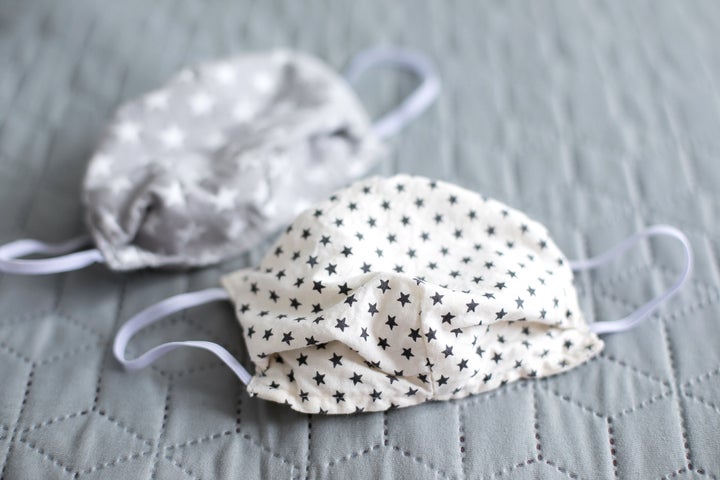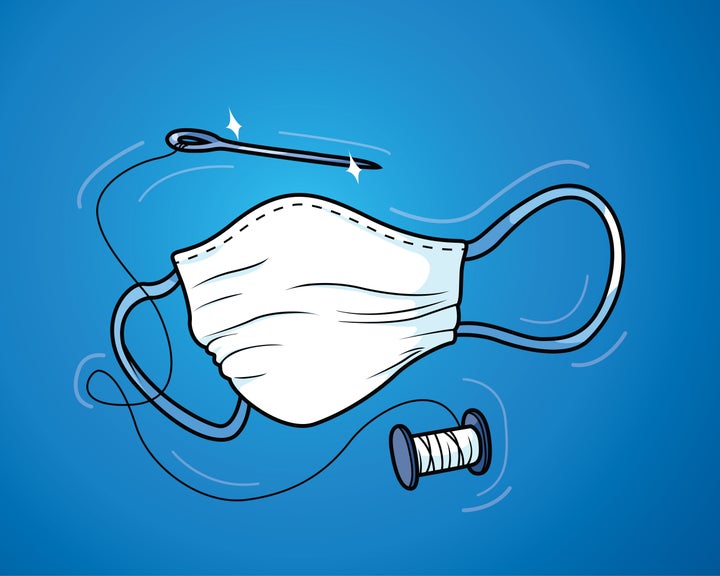People are now expected to wear face coverings on public transport, in shops, and in many indoor settings where they’re unable to socially distance across the UK.
Studies have found Covid-19 can be transmitted by people who don’t even show symptoms, meaning the coronavirus could be spread between people in close proximity – whether speaking, coughing sneezing, or even breathing.
The idea is that if your nose and mouth are covered, it reduces the risk of your droplets (from your saliva or mucus, but also tiny droplets you expel but can’t see) landing on someone else.
Face masks or covers: what’s the difference?
Trisha Greenhalgh, professor of Primary Health Care Services at the University of Oxford, says wearing face masks is “a socially responsible thing to do and may save lives”.
There are dozens of types of face mask and face covering out there, which makes things pretty confusing if you’re not sure where to begin when buying (or making) one.
As it stands, the general public are urged to wear face coverings by the UK government. These are different to the surgical and medical grade face masks that healthcare workers wear.
Face coverings can be anything from scarves that wrap around your face to the material face covers you can now buy from lots of high street retailers (it’s worth noting these are unregulated and not considered fit for medical use).
The key rule of wearing a face covering is that it must cover your nose and mouth to work properly. It should also fit well, which means not having loads of gaps at the sides – you want it to fit flush to your face, sitting across the top of your nose and tucking underneath your chin. Jets of air can escape from the back and sides of some masks if they are ill-fitting, a study found.
There are guides online for how to create a face covering. Prof Greenhalgh says: “You can make it out of a soft old t-shirt, for example. Chuck it in the laundry at the end of the day; detergent kills the Covid virus.”

How effective are face covers?
Bandanas, handkerchiefs and scarves aren’t particularly effective at keeping people’s germs under wraps, studies have found. Instead, experts (including the World Health Organisation) agree the best face covering to wear in public is a homemade one made from three layers of tightly woven material, such as cotton.
Other materials that work well include tea towel and cotton-blend fabrics, denim, and antimicrobial pillowcases. A combination of layers is the most effective – so get creative. Find advice on how to make them here and here.
For people who are in high risk groups – for example, those from Black, Asian and minority ethnic communities, or those with underlying conditions – Dr David Strain, a clinician at the Royal Devon and Exeter Hospital, recommends water resistant surgical masks. Look out for a CE mark when you buy these.
A study compared the effectiveness of single and double-layer cloth face coverings (the single layer one was made from a folded piece of cotton T shirt and hair ties, while the double layer one was made using the sew method, as set out by the CDC) with a 3-ply surgical face mask (made by manufacturer Bao Thach).
It found the surgical mask was best at keeping germs under wraps, followed by the two-layer covering. The researchers concluded: “Guidelines on home-made cloth masks should stipulate multiple layers.” If in doubt, three is best.
Mechanical engineer Taher Saif, professor at the University of Illinois, examined the effectiveness of common household fabrics in blocking droplets. His team tested the breathability and droplet-blocking ability of 11 common household fabrics, using a medical mask as a benchmark. The fabrics selected ranged from new and used garments, quilted cloths, bedsheets and dishcloth material. The researchers then characterised the fabrics in terms of their construction, fibre content, weight, thread count, porosity and water-absorption rate.
“We found that all of the fabrics tested are considerably effective at blocking the 100 nanometer particles carried by high-velocity droplets similar to those that may be released by speaking, coughing and sneezing, even as a single layer,” he said. “With two or three layers, even the more permeable fabrics, such as T-shirt cloth, achieve droplet-blocking efficiency that is similar to that of a medical mask, while still maintaining comparable or better breathability.”
While most of the focus is on protecting those around you (rightly so) there’s also some evidence to suggest face coverings do offer a protective effect – of sorts – to the wearer.
An analysis, conducted on behalf of the Royal Society and British Academy by researchers from the University of Oxford, looked at existing studies that have compared the protection of the wearer who wore a cloth mask compared to those who didn’t wear a mask.
Across four studies that looked at wearing cloth face masks versus not wearing masks at all, wearing a cotton mask was associated with a 54% lower risk of infection compared to the no-mask group. “It is not 100% protective but does reduce your odds,” said lead author Professor Melinda Mills, from the University of Oxford. In short, it’s better than nothing.
Researcher Jeremy Howard wrote in a separate report that there’s plenty of evidence that DIY masks are useful at protecting the wearer. But effective protection depends on three “critical” things, he said. Firstly, material: does the mask filter particles of the appropriate sizes? Secondly, fit: could particles squeeze in through the gaps of your mask? And lastly, sanitation: can you clean and re-use the mask?
How to make your own face cover
If you do want to make your own, the Masks4All website has a range of online tutorials. It advises the use of tightly woven fabric that you can still breathe through and including a layer of paper towel as a disposable filter – which you can slide between two layers of cloth.
Critically, wearing a homemade face cover should not detract from the things we should all be doing to reduce our risk of contracting the virus – hand-washing, covering coughs and sneezes, social distancing, adhering to lockdown measures and self-isolating (where needed).

How to wear a DIY cover or mask safely
- Wash hands with soap and water for at least 20 seconds before putting on your makeshift mask.
- Secure the mask ties behind your ears or head without touching your face. The mask should fit well over your nose and mouth without restricting your breathing.
- Do not touch your face or the front of the mask while wearing it.
- When you come to remove it, release the ear loops or ties without touching your face or mask.
- Wash your hands with soap and water for at least 20 seconds after removing the mask. You should wash your mask after every wear with detergent and at least 60 degrees Celsius.
